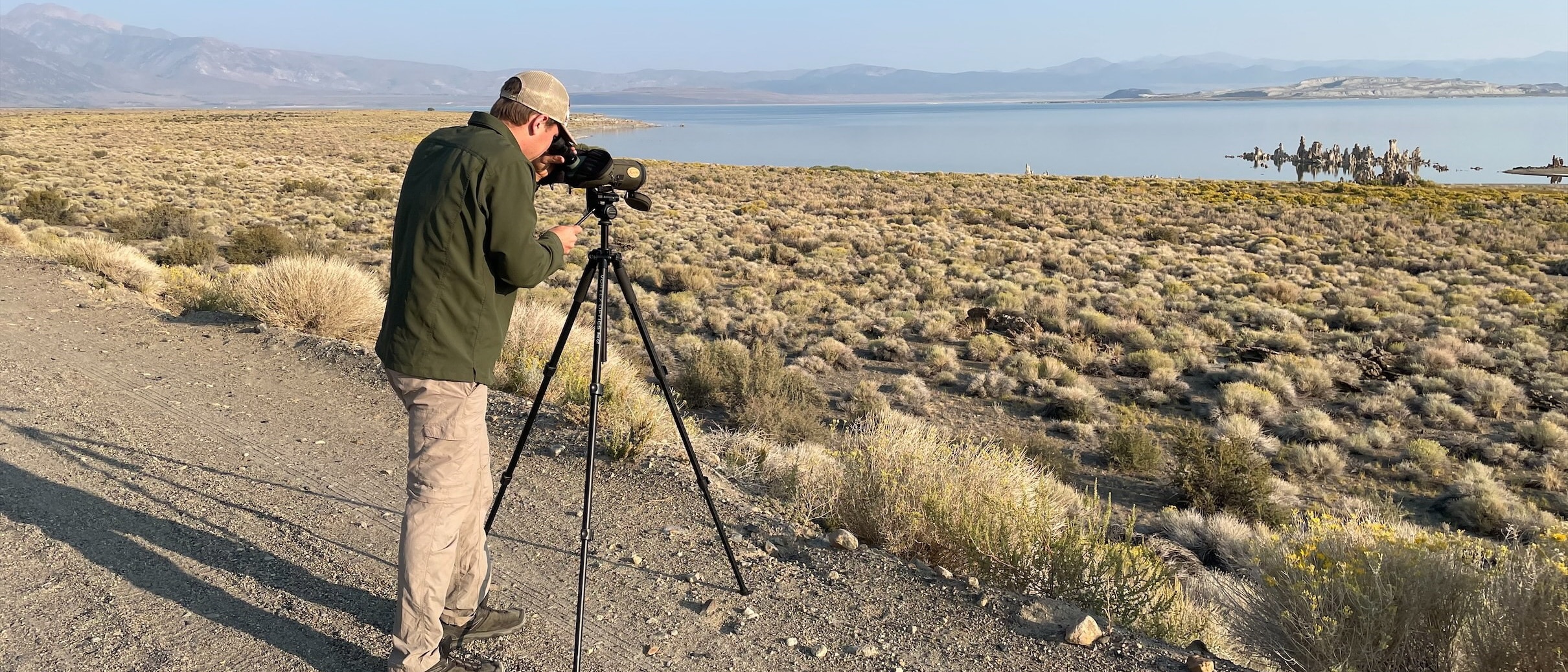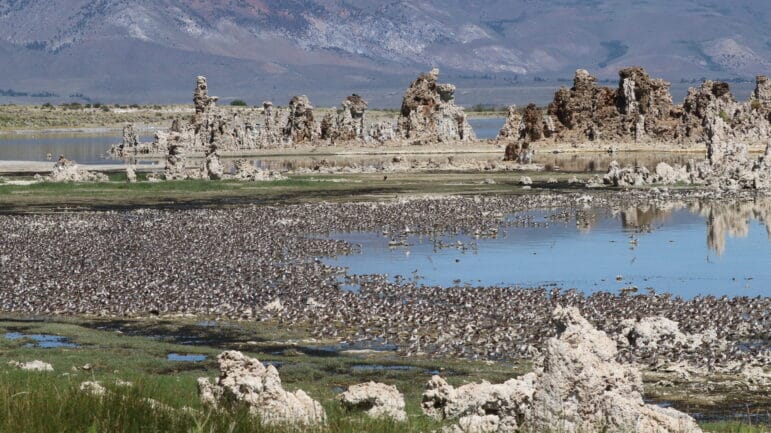
Relationships can be complicated. Sometimes, you fall for someone who is simply not into you. Sometimes it’s the other way around. We’ve all been there, and know that these complicated relationships are often formative and have enduring impacts. Before interning for the Mono Lake Committee, I presumed that my complicated relationships were restricted to people. Yet, I have found myself in a complicated affair with … phalaropes.
My admiration for phalaropes runs deep. They are whimsical, almost a poster child for “cute birds.” These small shorebirds swim gracefully and are unique in their ability to make whirlpools in the water to feed on flies. And if you have seen their murmuration, it is nothing short of breathtaking. Yet, despite my admiration, they seem to be … avoiding me.
Mono Lake is a necessary migratory spot for two species of phalaropes: Wilson’s and Red-necked. Researcher Ryan Carle of Oikonos Ecosystem Knowledge is continuing his project to understand the population health of phalaropes at Mono Lake. An essential part of this research is surveying the number of phalaropes at the lake every two weeks. I’ve been able to take part in these surveys from nearly every readily-accessible shore at Mono Lake. Yet, these phalaropes seem to be avoiding me. Out of the reported peak 45,000 phalaropes seen this year at Mono Lake, I have seen less than two hundred (that’s far less than 1 percent!).
With the first shore count, I was assigned to survey the phalaropes on the north end of the lake and counted about one hundred birds. I was impressed, but my heart sank a little when I heard that the crew surveying the south end saw over 8,000, and the boat counts got another 12,000. No problem, I thought; I’ll see them in massive troves during the following survey in two weeks.
I was assigned the north shore survey points again. I had received word that several thousand phalaropes were hanging out at Old Marina the night before. To say I was excited was an understatement. Yet to my disappointment, there were zero phalaropes seen between Old Marina, County Park, and Black Point the morning of our survey. However, there were a whopping 45,000 phalaropes at the lake between the south side surveys and boat counts! These numbers of phalaropes have not been seen at Mono Lake in decades. And during this momentous moment, the phalaropes avoided me. Was it my breath? Bad hair day? I chalked up my misconnection to a misplacement. If only I could survey the south side of the lake, then I could see these spectacular birds.
To my excitement, I was scheduled to survey the south side of the lake during our third outing. This is where the phalaropes are hanging out, I thought. I made sure nothing was in my teeth, and put on my fanciest outdoor shirt. The phalaropes, to my dismay, had either left for their 3,000-mile journey to South America or moved to the hard-to-access eastern side of Mono Lake.
In the several surveys since my initial attempts at seeing the phalaropes, I have seen glimpses of them, but never in large flocks by the thousand. Until I see the phalaropes, I will continue to enjoy the research and the scientific process.
Sadly, I may have to wait patiently for the phalaropes to return next year to see them in their brilliant numbers. But as psychologist Albert Ellis once wrote, “The art of love is largely the art of persistence.”

Top photo by Forrest English.
